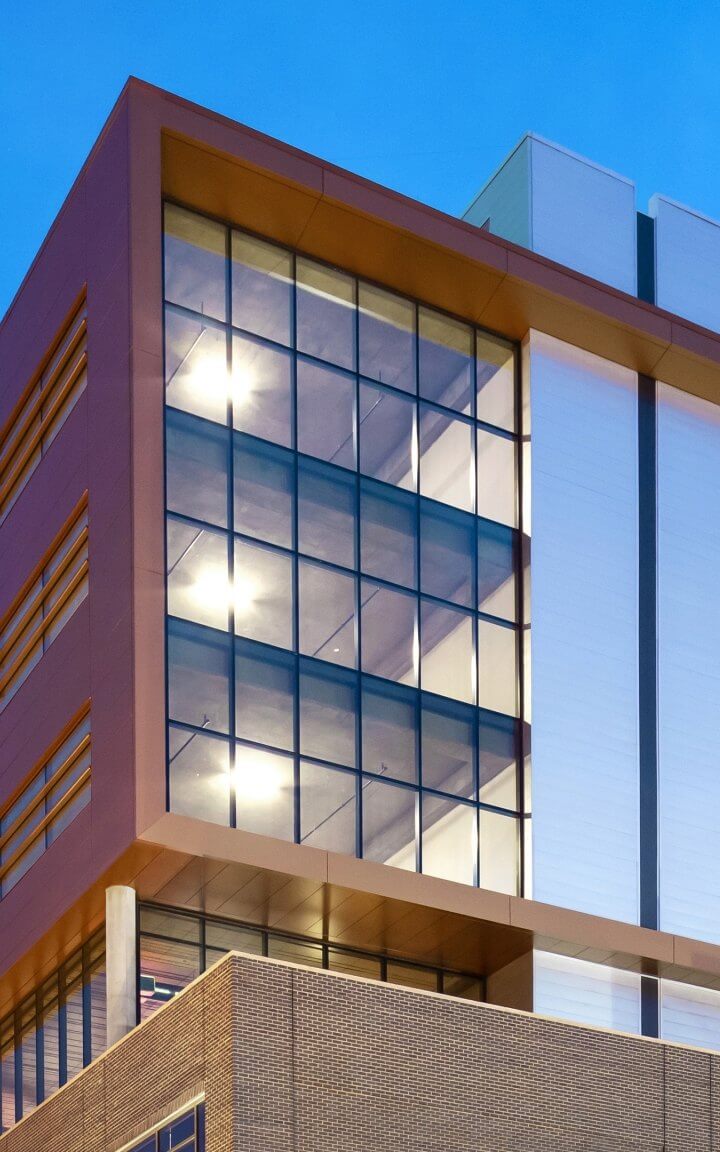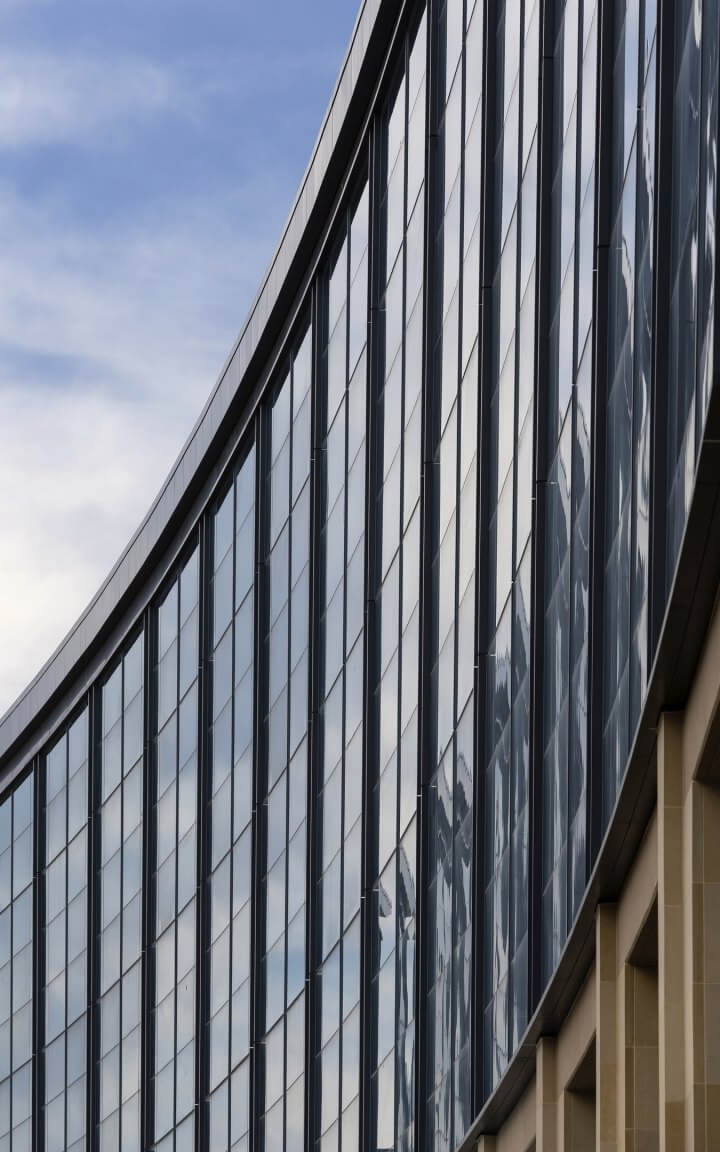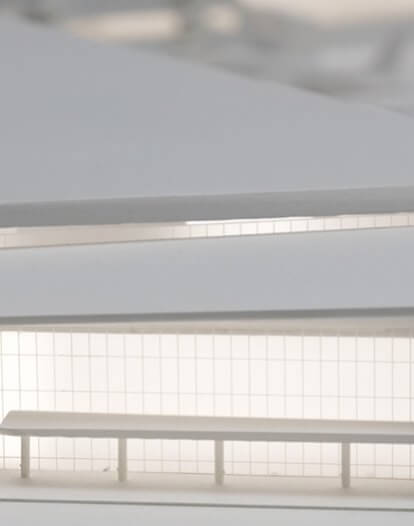Elevating Higher Education — Shaping the Student Experience

A principal in Corgan’s Education Studio, Sangeetha Karthik has spent more than 20 years designing and developing educational environments. She is passionate about evolving the role of higher education and providing college students from all walks of life with inspiring and functional spaces. In this Q&A, Sangeetha discusses how building design can shape the student learning experience and prepare them for the future.
Throughout your career, you’ve been integral in Corgan’s continual growth in education. What strategies contribute to the success of our higher education practice?
Corgan consistently ranks high in the education sector for a reason, and it’s more than the award-winning designs — we believe our obsession with client service separates us. Corgan’s success hinges on our deep knowledge of the project type, our ability to really listen and understand each client’s unique perspective, and our passion for serving the curricular, social, and emotional needs of students of all ages.
It’s striking that critical balance to meet both the operational as well as the curriculum requirements that shape these spaces. As responsible stewards of our clients’ resources, flexibility is also paramount to meet shifts in pedagogical trajectories. Considering that these buildings will be in use for 50 years or more, we’re committed to designing places that support student needs of today, as well as far into the future.
We start by asking: What can we do to enhance the student experience? How can we encourage students to learn and thrive? And how can we inspire students and faculty to shape a better future for tomorrow? We really dig in — immersing ourselves in the institution’s culture, history, and goals. We also consider what happens once a student graduates, and how we can set them up to meet current workplace demands. Leveraging our firm’s knowledge across multiple sectors including our aviation, healthcare, commercial, and workplace design practices, lends us the expertise to design spaces that simulate the real-world environment.

What are some key design considerations for a campus?
Our clients want a cohesive campus comprised of buildings that are both functional and aesthetically pleasing — places which offer an elevated student experience that also attract and retain talented educators. Since prospective students decide whether they connect with the campus and effectively choose if they want to apply within minutes, our goal is to create a sense of place where all students quickly connect, feel they belong, and believe they will succeed.
In addition to meeting the guiding principles for any project, we continuously evaluate design choices through a lens of sustainability, maintenance, and durability. When designed well, these spaces see heavy use, and the demand on the maintenance team can be significant. It’s our job to plan for that and provide solutions that are maintainable at a low cost and with available resources. With our expertise in sustainable design, materiality, and systems, we design spaces that are right for each client’s budget, climate, and use.
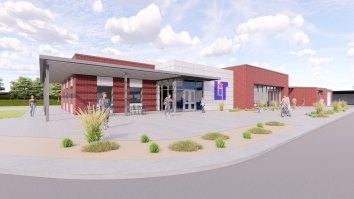
Three Considerations that Shape the Learning Experience
Centering the design around the pedagogy and delivery of the curriculum. While active learning is effective for all course content, some subject matter is more conducive to application and conceptualization of the information taught. The facilitator’s interaction with the classroom environment, students, and the content delivered are key considerations in the design. For instance, a lecture-based class is delivered more effectively in a fixed setting with adequate technology while a science course should be taught in a space conceived as a synergy lab, with the lab and lecture content delivered within the same setting.
This approach allows the curriculum and student needs to drive decision making for technology choices, instead of the other way around. Considerations should be given for multiple teaching walls to provide a variety of content delivery options. Our team pays keen attention to owner preferences layering them with our experience and expertise.
This consideration leverages technology and moveable furnishings — to make classrooms “future-proofed” to a degree. Understanding that decisions made today have a lasting impact, our team urges stakeholders and owners to think beyond now and shape a vision tailored for student success and engagement in the future.
Case Study
Dallas College Richland Campus — Red River Hall
To compete in the highly competitive higher education market and to make up for high attrition rates, design must offer opportunities for students to connect and succeed. These are some of the key considerations and design concepts which were the focus of the Dallas College Richland Campus, Red River Hall.
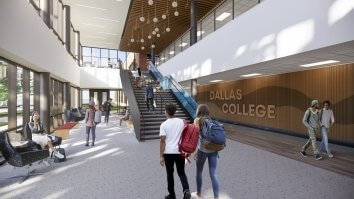
Creating a student and faculty experience to attract and retain both populations.
The design prioritized adjacency of student areas to faculty to support coursework. Faculty offices are made highly visible for easy access to encourage students to interact with professors. Focused tutoring zones located near student collaboration zones inspire connection. Faculty amenities located throughout the building were strategically placed to elevate employee/educator satisfaction and shape the campus culture.
A campus gateway designed to welcome a diverse student body.
From dual credit high school students to first-generation college goers and adults returning to college to finish or obtain their degrees, campus buildings promote interaction and connection among a diverse student population. Buildings on campus relate to the existing framework while uniquely contributing to the experience.
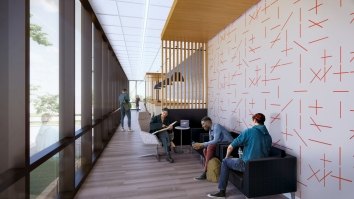
A choice of flexible learning environments along with amenities.
Flexible classrooms with operable walls open spaces for lectures allow educators to adapt their individual teaching styles. Ample collaborative spaces and work zones to study or decompress allow students to interact or concentrate between classes. Respite and study spaces with plug-in technology provide options for those students who stay on campus all day. Grab-and-go food options and lounge areas where students can socialize between classes attract students from all over campus, creating a sense of connection and belonging.

Transparency and outdoor views to keep students energized and engaged.
Exterior windows overlooking the campus provide connection and context. It’s well known that visual connection to the outdoors tunes into circadian rhythms and increases the health and wellbeing of students and staff, while strategic lighting throughout the campus provides safety for those attending night classes. Rather than treating outdoor spaces as an afterthought, outside spaces or “rooms” are shaped to extend beyond the indoors to bring the outdoors in. Operable partitions extend interior rooms and open to the adjacent lawn. In one facility, an outdoor synthetic turf area is used by athletes to practice as well providing a place for students to hang out or enjoy a quick game of soccer between classes.
Evolution of Higher Education
Recent changes in lifestyle and workplace expectations along with the staggering costs of student loan debt ask us to rethink higher education typologies to provide an enduring and high-quality experience for both teachers and students on campus. In this episode, Sangeetha Karthik, principal of the Education Studio, addresses changing student demographics as technology plays a bigger role in education and workers return to college for professional training and development. Learn how creating resilient and empathetic spaces on campus can reintroduce the joys of learning where students and staff feel engaged and connected.
